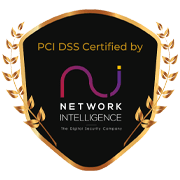In-House vs Nearshore/Offshore: A Strategic Guide for 2025
After nearly a decade in the BPO industry and working with hundreds of companies at Redial BPO, I’ve seen firsthand how the decision between in-house operations and outsourcing can make or break a company’s growth trajectory. I’m Elder Gonzalez, VP of Client Services at Redial BPO, and today I want to share what I’ve learned about this critical business decision.
Understanding Your Options: In-House, Nearshore, and Offshore
Before we dive deep, let’s clarify what we’re actually talking about.
In-house operations mean building and maintaining your own team locally: Recruiting, training, managing, and scaling everything internally within your home country.
Outsourcing is the strategic practice of partnering with external providers to handle specific business operations or projects. This includes two primary models:
- Nearshore services: Outsourcing to nearby countries with similar time zones and cultural alignment (like a call center in Mexico for US-based companies)
- Offshore services: Partnering with providers in distant regions, often with significant time zone differences
The In-House Approach: Benefits and Real Costs
I completely understand why many executives prefer keeping operations in-house. There’s something reassuring about having your entire team under one roof, where you can walk over to someone’s desk and address issues immediately.
The Advantages of In-House Teams
When you build internally, you get:
Direct control over hiring and culture building. You handpick every team member based on your exact specifications, ensuring they align perfectly with your company values and vision. This matters tremendously when you’re establishing the foundation of a new department.
Seamless communication and collaboration. Everyone works in the same location, under identical systems and processes. Team meetings happen spontaneously, decisions get made faster, and there’s no confusion about time zones or holidays.
Immediate oversight and course correction. When problems arise, you’re right there to address them. No waiting for scheduled calls or dealing with international communication delays.
The Hidden Costs Nobody Talks About
Here’s where I need to be frank with you. The actual cost of in-house operations extends far beyond salaries.
According to SBA data, the actual cost of an employee ranges from 125% to 140% of their base salary. This includes:
- Health insurance, retirement contributions, and paid time off
- Recruitment costs (advertising, interviewing time, background checks)
- Onboarding and continuous training programs
- Office space, equipment, and technology infrastructure
- HR management, payroll processing, and compliance
- Employee turnover and replacement costs
For a customer service representative earning $40,000 annually, your real investment is closer to $50,000-$56,000 per year. Multiply that across a 50-person team, and you’re looking at $2.5-$2.8 million in annual costs before considering management overhead.
In today’s competitive landscape, especially for small to medium-sized businesses, these numbers can become unsustainable quickly, particularly when you’re trying to scale operations or expand into new markets.
The Outsourcing Alternative: Strategic Growth Through Partnership
Over the past decade, I’ve watched outsourcing evolve from a cost-cutting measure to a sophisticated growth strategy. Companies no longer outsource to save money, they outsource to access expertise, scale faster, and compete more effectively.
Why BPO Services Make Financial Sense
The primary advantage remains cost efficiency, but it’s more nuanced than you might think.
Lower operational costs don’t mean lower quality. Countries like Mexico, Costa Rica, the Philippines, and South Africa offer significantly lower living costs, which translate into competitive labor rates. However, this allows BPO providers like Redial to invest more in:
- Comprehensive training programs that exceed industry standards
- Advanced technology platforms and analytics tools
- Performance bonuses and employee benefits that attract top talent
- Quality assurance systems that maintain consistency
When you partner with a call center in Tijuana, for example, you’re accessing bilingual talent at 40-60% less cost than equivalent US-based operations, while maintaining the cultural alignment and time zone compatibility that makes nearshore so effective.
Beyond Cost: The Strategic Advantages
What truly excites me about modern call center services is how they’ve become strategic enablers rather than just cost centers.
Instant scalability without capital investment. Need to add 20 agents for a product launch? Done in weeks, not months. Seasonal spike in demand? We scale up and down seamlessly. You pay for capacity when you need it, not year-round overhead.
Access to specialized expertise and technology. At Redial BPO, we invest millions in workforce management systems, quality monitoring platforms, omnichannel solutions, and AI-powered analytics. These are tools most companies can’t justify purchasing for a single department, but we deploy them across our entire operation.
Risk mitigation and business continuity. We handle recruitment, HR compliance, labor law adherence, facility management, and disaster recovery. All the operational headaches that keep executives up at night? We own them.
Focus on your core business. This might be the most undervalued benefit. When you’re not managing a 100-person call center, your leadership team can focus entirely on product development, sales, and strategic growth.

Nearshore vs Offshore: Choosing Your Outsourcing Model
Not all outsourcing is created equal, and the decision between nearshore and offshore depends entirely on your specific needs.
When Nearshore Makes Perfect Sense
I typically recommend nearshore solutions for companies that need:
Real-time collaboration across teams. When your outsourced team needs to work closely with internal departments, time zone alignment becomes critical. A call center in Mexico operates in the same hours as your US headquarters, making coordination seamless.
Cultural and linguistic compatibility. For customer-facing operations serving North American markets, the cultural nuance and accent-neutral communication provided by nearshore locations creates superior customer experiences.
Quick oversight and visits. When you need to visit your outsourced facility regularly, Mexico is a 2-3-hour flight from most US cities, not a 20-hour flight to Asia.
When Offshore Delivers Maximum Value
Offshore solutions shine when you need:
24/7 follow-the-sun coverage. By combining locations across different hemispheres, you can provide truly uninterrupted service without requiring any team to work overnight shifts.
Specialized skill sets in specific markets. Certain regions have developed deep expertise in particular industries or technical areas. The Philippines, for example, has become renowned for healthcare customer support, while South Africa excels in financial services.
Maximum cost optimization. When price sensitivity is your primary concern and the nature of work doesn’t require real-time collaboration, offshore can deliver the most significant savings.
At Redial BPO, we operate across Mexico, Costa Rica, South Africa, and the Philippines, which allows us to design hybrid solutions that leverage the best of both models for each client’s unique situation.
Making the Right Decision for Your Business
After helping hundreds of companies through this decision, I’ve developed a framework that might help you.
Stick with In-House If:
- You’re in a highly regulated industry with complex compliance requirements unique to your business
- Your operations require proprietary knowledge that absolutely cannot be shared externally
- You have unlimited capital, and the primary goal is maximum control, regardless of cost
- Your volume is too small to justify the setup process (typically under 5-10 agents)
Consider Nearshore Services If:
- You need to scale customer service, sales, or technical support operations quickly
- Cost reduction is important, but cultural alignment and time zone compatibility matter equally
- You serve primarily North American markets and need accent-neutral communication
- You want the flexibility to visit operations regularly without international travel complexity
Explore Offshore Services If:
- You need global coverage across multiple time zones
- Maximum cost optimization is your primary objective
- The work is process-driven and doesn’t require constant real-time collaboration
- You’re targeting international markets where local language and cultural expertise provide competitive advantages
What to Look for in a BPO Partner
If you decide outsourcing is right for you, choosing the right partner is absolutely critical. I’ve seen companies have terrible experiences because they selected based solely on price, ignoring everything else that matters.
Here’s what I recommend evaluating:
Proven track record in your industry. A generic call center experience isn’t enough. Look for partners who understand your specific vertical, whether that’s e-commerce, healthcare, SaaS, financial services, or something else entirely.
Transparent operations and reporting. You should have real-time access to performance metrics, quality scores, and customer feedback. Mystery around operations is a massive red flag.
Investment in technology and training. Ask about their workforce management systems, quality assurance programs, and ongoing training initiatives. Partners who cut corners here will cut corners everywhere.
Scalability and flexibility. Your business will change. Can your BPO partner scale up during peak seasons and adjust during slower periods without long-term commitments that lock you into fixed costs?
Cultural alignment and values. This goes beyond language. Do they understand your brand? Do they treat customers the way you would? The best outsourcing relationships feel like true partnerships, not vendor transactions.
The Future of Outsourcing: A Hybrid Approach
Here’s something I tell every prospective client: this isn’t an all-or-nothing decision.
Many of our most successful partnerships involve hybrid models where companies maintain strategic in-house teams while outsourcing specific functions. For example:
- Keep your product specialists and complex escalations in-house
- Outsource tier-1 customer support, order processing, and appointment setting
- Maintain internal training and quality teams while we handle delivery
This approach gives you control over critical touchpoints while gaining the scalability and cost benefits of outsourcing for high-volume, process-driven operations.
Final Thoughts: It’s About Strategic Growth, Not Just Cost Cutting
After years in this industry, I’ve learned that the companies that succeed with outsourcing are those that view it as a strategic growth enabler, not just a way to reduce headcount.
Yes, cost savings matter, and they can be substantial. But the real value comes from redirecting those savings and freed-up leadership bandwidth toward innovation, product development, and market expansion.
When you partner with the right BPO provider, you gain more than cost efficiency. You gain scalable infrastructure that grows with you, access to expertise and technology you couldn’t build on your own, and the freedom to focus on what makes your business unique.
At Redial BPO, we’ve built our entire approach around this philosophy. We don’t just answer phones, we become an extension of your team, invested in your success because our growth is tied directly to yours.
If you’re wrestling with this decision, I’d love to talk through your specific situation. Sometimes the answer is obvious, but often it requires understanding the nuances of your business, growth plans, and current challenges.
Ready to explore what outsourcing could mean for your business? Let’s have a conversation—no pressure, just honest insights from someone who’s helped hundreds of companies navigate this exact decision.
Redial BPO, your strategic BPO Call Center Partner
FAQ: In-House vs Nearshore/Offshore
1. What’s the main difference between nearshore and offshore outsourcing?
Nearshore outsourcing involves partnering with service providers in nearby countries with similar time zones and cultural alignment (such as Mexico or Costa Rica for US companies). In contrast, offshore outsourcing typically involves working with providers in distant regions like Asia or Africa. Nearshore offers easier collaboration and cultural compatibility, while offshore often provides maximum cost savings and 24/7 coverage through time zone differences.
2. How much can I really save by outsourcing my call center operations?
Most companies see cost reductions of 40-60% compared to in-house operations when outsourcing to nearshore locations like Mexico, and up to 70% with offshore solutions. However, savings extend beyond labor—you also eliminate recruitment costs, training expenses, infrastructure investment, and HR overhead. For a 50-agent operation, this typically translates to $800,000-$1.5 million in annual savings.
3. Will outsourcing affect the quality of my customer service?
Not if you choose the right partner. Modern BPO providers invest heavily in training, technology, and quality assurance programs that often exceed what individual companies can build internally. The key is selecting a partner with proven experience in your industry, transparent operations, and a genuine commitment to representing your brand correctly. At Redial BPO, our quality scores consistently match or exceed clients’ internal benchmarks.
4. How quickly can I scale my operations with a BPO partner?
One of the most significant advantages of outsourcing is scalability and speed. Most BPO providers can recruit, train, and deploy new teams within 3-6 weeks, compared to 3-6 months for building in-house. This makes it ideal for product launches, seasonal demand, or rapid business growth. You can also scale down just as quickly without the costs and complications of layoffs.
5. What should I keep in-house versus outsource?
Generally, keep strategic functions, core intellectual property, and complex escalations in-house, while outsourcing high-volume, process-driven operations like tier-1 support, order processing, appointment setting, and data entry. Many successful companies use a hybrid model—maintaining small internal teams for oversight and specialized needs while outsourcing the bulk of routine customer interactions for scalability and cost efficiency.

I’m the VP of Client Services at Redial BPO. I’m passionate about CX, building strong client relationships, and blending tech with human talent to deliver top-tier service across industries.



